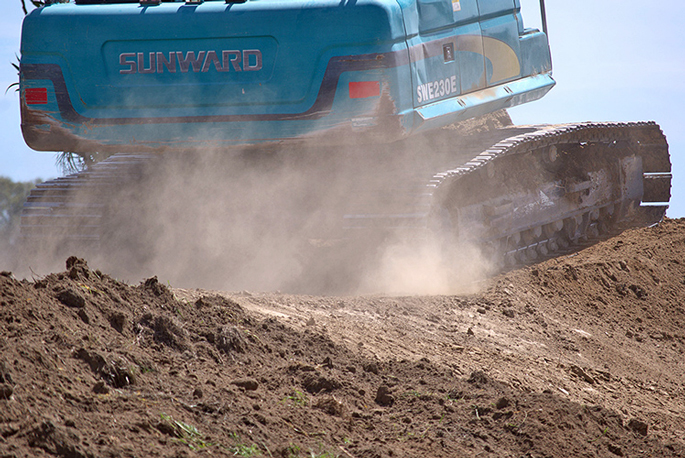A cow dung-like smell wafting from earthworks along the Whakatāne stopbank has Riverside Drive residents holding their noses.
However, while Bay of Plenty Regional Council, which is responsible for the work, apologises for the unpleasant odour, it also assures the public the non-toxic smell will soon dissipate.
A Riverside Drive resident, who asked not to be named, says the smelly dust from the earthworks has penetrated right through their homes. He describes the smell as overpowering, “like a cowshed smell, only worse”.
He says soil is being dug up from close to the river’s edge, left in piles to dry out and then distributed as topsoil over the top of the newly compacted stopbank.
The moving of the dirt causes dust to coat the nearby homes. The smell is apparent from the street.
He says he was told that the workers had a water tanker to dampen down the fine dust, however, they didn’t appear to be using it sufficiently.
“Surely, when the workers were digging that soil up they must have been able to smell it and know it wasn’t going to be suitable for spreading in a residential area.”
Regional council rivers and drainage assets manager Kirsty Brown says the council’s pollution hotline received one complaint on Thursday and three more on Monday about the smell, which is relates to its Safeguard our Stopbanks Stage 3 work site.
"The smell is a common issue associated with stopbank earthworks,” says Kirsty.
“The construction process involves the removal and stockpiling of topsoil from the surface of the stopbank. This topsoil contains organic matter from the site - organic compounds such as plants, grass and soil.
“When this topsoil is replaced back onto the stopbank, it is common for a temporary odour to occur. This is due to the natural breakdown of the stockpiled material.
"In this situation, there was topsoil material that contained a higher-than-normal amount of organic matter. When the material was disturbed and exposed to air, the damp topsoil emitted a strong odour. As it was being spread on the stopbank, the odour intensified."
Kirsty says the topsoil is being spread to help with grass growth on the stopbank.

“Good grass cover can help protect against erosion and helps to hold together the soil structure underneath, making it an integral part of good stopbank integrity.
“Now that the material is in place, the smell has dissipated considerably. Hydroseeding is currently underway, which will further help dampen any remaining odour. In discussion with our contractor, there will be a closer assessment of the suitability of materials.
“We acknowledge that this odour can be unpleasant and we apologise for any inconvenience caused, however, we would like to reassure the community that it is not toxic and the odour will dissipate once the ground is settled.”
LDR is local body journalism co-funded by RNZ and NZ On Air.




0 comments
Leave a Comment
You must be logged in to make a comment.